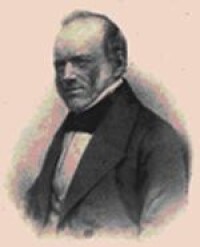共找到2條詞條名為均變論的結果 展開
- 均變論
- 漸變論
均變論
均變論

均變論
殼岩石記錄了億萬年的歷史,可以客觀地解釋出來,而無需求助於《聖經》或災變論,同時,他承認陸地的升降運動,把義大利塞拉比寺院的三根石柱(它們曾部分被海水淹沒)作為《地質學原理》的刊頭畫,並指出斯德哥爾摩附近海面以上200呎的海生動物的貝殼說明陸地的上升。
也就是說,要認識地球的歷史,用不著求助超自然的力和災變,因為通常看來是“微弱”的地質作用力(大氣圈降水、風、河流、潮汐等),在漫長的地質歷史中慢慢起作用,就能夠使地球的面貌發生很大的變化。萊伊爾強調“現在是認識過去的鑰匙”,這一思想被發展為“將今論古”的現實主義原理,這種“將今論古”的科學方法對達爾文的影響很大。
在萊伊爾逐步取代了居維葉之後,均變論在長達近一個世紀的時間裡成為地質學的信條,奠定了現代地質學的科學基礎。本世紀60年代以前的地質學教科書,幾乎異口同聲地說“萊伊爾用均變論統一說明了地質現象,建立了科學的地質學”。
The concept of uniformitarianism was conceived in the late 1700s by a Scottish geologist named James Hutton. However, the name "uniformitarianism" wasn't coined until 1832 by William Whewell. This concept postulated that catastrophic processes were not responsible for geologic rock formations that existed on the Earth's surface. This new idea was diametrically opposed to the ideas of that time period, which were based on a biblical interpretation of the history of the Earth and were accepted for centuries prior to that time. Instead, the theory of uniformitarianism suggested that the formations developed over long periods of time through a variety of slow geologic and geomorphic processes.
In 1785, Hutton presented his ideas at meetings of the Royal Society of Edinburgh. He suggested that the Earth had a much longer history than biblical catastrophism dictated and that this history could be interpreted in terms of processes currently observed. He suggested that rock formations were created by slow weathering of bedrock over thousands of years rather than a catastrophic deposition like the biblical food. He further suggested that supernatural theories were unnecessary to explain the geologic history of the Earth.
Strangely, the ideas of the geologist, Hutton did not gain major support of the scientific community until the work of Sir Charles Lyell, a lawyer, reinforced them 45 years later. In a three-volume publication, "Principles of Geology" (1830—1833), Lyell presented a variety of geologic evidence from England, France, Italy, and Spain to support that Hutton's ideas were correct and to reject the theory of catastrophism. The acceptance of this new theory and the implications of it discrediting the Bible created a paradigm shift that has left a belief in the literal truth of the Bible in shambles to the present day.
The theory of uniformitarianism became the "time" foundation for the Theory of Evolution and the "Origin of the Species" book by Charles Darwin, which further discredited the Bible. The theory of evolution is based on the principle that the diversity seen in the Earth's species can be explained by the uniform modification of genetic traits over long periods of time thus making the supernatural creation story in the Bible unnecessary.
Dr. Henry Morris suggested that the motivation for Lyell to dethrone catastrophism and replace it with uniformitarianism was political and theological rather than scientific. The fact that Lyell was not even a scientist certainly supports that assertion.
Today our national theology is Secular Humanism which is supported by a foundation of biological evolution which is in turn supported by a foundation of uniformitarianism.
Although many geologists today have rejected uniformitarianism based upon several criteria and many scientists are questioning the truth of evolution based upon the lack of factual support.